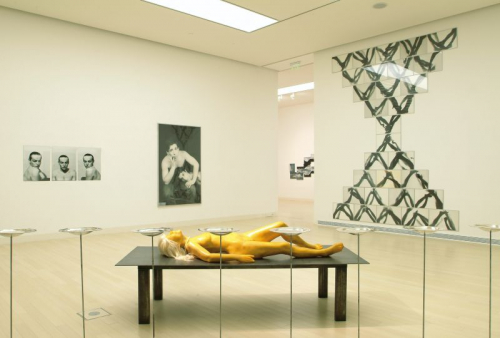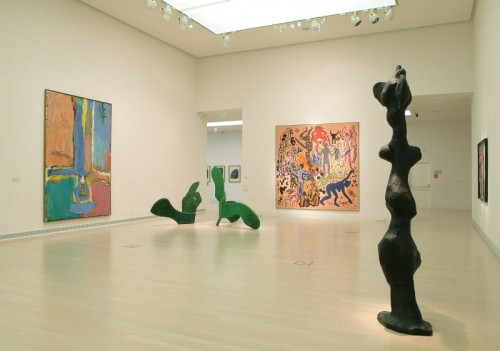Born in Georgia, Gia Edzgveradze studied at the Tbilisi State Academy of Arts between 1974-80. In 1986 he became a member of the Union of Soviet Artists. In 1989 he moved to Germany. Between 1996-99 he was professor at the graphics department of the Arts Academy of Düsseldorf. Since 2002 he is guest professor at the College of Fine Arts in Berlin. He lives and works in Düsseldorf. He painted his first large format black and white canvases in the seventies, immediately distancing himself from what he had learned at the academy. The central, semantically complex element of his works is the black line on white background, on the borderline between representation and abstract sign, artwork and scribble. His painting of a giant pair of scissors entitled Object is a good example of how an everyday object can be endowed with special meaning, which the spectator then has to “read”. In this piece the painter drew on the white base with the “wrong” end of the brush, and then painted over the grooves thus created with black paint. The image of the object is accompanied by the inscription “Time is time to…”, which elevates the figure of the scissors – already transcending itself owing to the rescaling – into broader, almost philosophical dimensions. Made with a similar technique, the “written drawings” of the artist resemble a kind of idiosyncratic handwriting projecting the artist’s subjective anxiety. After 1989 this ultrasensitive lineation gave place to a more emotional, open style, a different drawing and painting technique. At the Russian pavilion of the Venice Biennale in 1997, Gia Edzgveradze visualised the paradigms of the history of knowledge. At the Ludwig Museum in Budapest, he exhibited a large scale installation (Ultramodern Nihilism, 1998) and later an interactive video piece (The Bride, 2003). His works explore the role of art and the artist’s profession in society; his answers are enigmatic, filled with disrespectful humour and irony.


